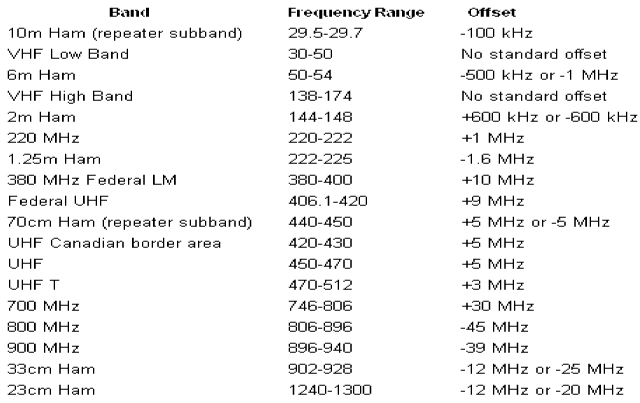HAM Repeater Offset
The receive and transmit frequencies are offset for duplex communication on the repeater.
If a repeater output is on 147.300 the mobile would transmit on 147.900 and receive on 147.300. The repeater picks up the transmission from the mobile on 147.900 and simultaneously retransmits that on 147.300.
Band Output Freq Offset
6 meter 51.620 - 51.980 -500 kHz
52.500 - 52.980 -500 kHz
53.500 - 53.980 -500 kHz
2 meter 145.200 - 145.500 -600 kHz
146.610 - 146.970 -600 kHz
147.000 - 147.390 +600 kHz
1.25 meter 223.850 - 224.980 -1.6 Mhz
70 cm 440.000 - 445.000 +5 Mhz
447.000 - 450.000 -5 Mhz
23 cm 1282 - 1288 -12 Mhz
1290 - 1294 -12 Mhz
See your local band plan.
scanning
When scanning for repeaters you may hear an automated voice announcing a call sign and possibly some other information such as location or time. You can reference this information when looking up the repeater. You may also hear beeping as the repeater is using CW to identify. This is known as CWID.
plus and minus offset
If the repeater’s input frequency is higher than the output frequency, that is a positive shift. Negative shifts place the repeater’s input frequency below the output frequency.
PL tone
Private Line - some repeaters use this tone, which is below audio, for repeater access.
